CURRENT STATUS OF REGIONAL AQUACULTURE IN AFRICA, CASE OF EGYPT
By: Dr Mustapha ABA. Aquaculture Scientific Expert. Fish Nutrition. Rabat. Morocco.
Introduction
According to the OECD (2023), in order to ensure food security, world fish production should increase by 1.2% per year and should reach 203 Mt by 2031, an overall increase of 25 Mt (+14%) compared with the reference period (average 2019-2021), and by 2031, world aquaculture production should reach 108 Mt, 12 Mt more than the capture sector. Aquaculture will account for 53% of total fish supply in 2031, compared with 49% in the 2020 period (Figure 1).

Fig 1 : Aquaculture, total capture production and capture for human consumption (Source: OECD/FAO, 2022)
Fisheries catches have risen from 7 million tonnes to 10 million tonnes in 2020, while aquaculture production was around 450 000 tonnes in 2000, rising to almost 2 million 420 000 tonnes in 2020 (FAO, 2024).
The 2.4 million African aquaculture products are not evenly distributed across the continent, with African regions experiencing major disparities in aquaculture production for decades (Fig 5), with significant production since the 2000s in the North, West and East African regions, and of the 2.4 million tonnes produced in aquaculture on the African continent, North Africa produces almost 70% (almost all by Egypt), West Africa with 16.06%, while the East African region produces 15.70% of aquaculture products. Central and Southern Africa produce less than 1.3% (FAO, 2024).
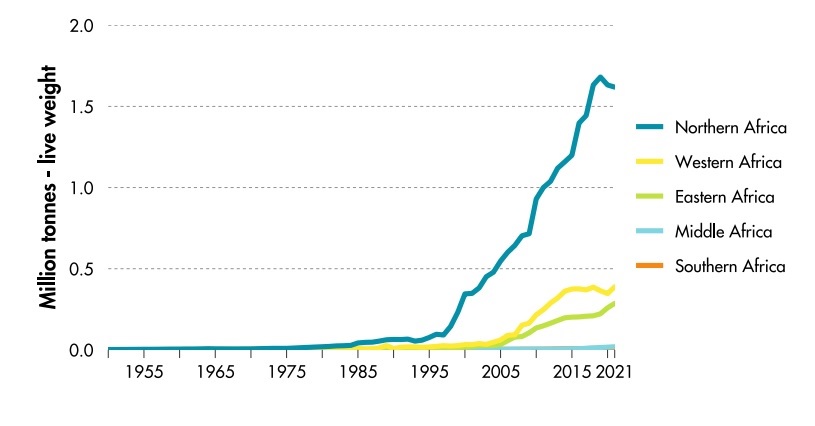
Fig 5 : Aquaculture production in the 5 regions of Africa
Africa’s contribution to global aquaculture production is still insignificant (2%) (FAO, 2023), although it is increasing considerably with larger-scale investments in Egypt, Nigeria, Uganda and Ghana producing substantial quantities of fish (Cai et al., 2017). The region recorded a twenty-fold increase in production, rising from 1,110,200 to 2,418,844 tonnes from 1995 to 2021, with an annual growth rate of 15.55% (FAO 2023). The growth in aquaculture production shows huge disparities between the different regions of Africa, and the aim of this article is to analyse the current situation of aquaculture in the leading aquaculture producers in the 5 regions of Africa, namely Egypt in the North African region, Nigeria in the West African region, Uganda in the East African region, Cameroon in the Central African region and South Africa in the South African region.
CURRENT STATUS OF AQUACULTURE IN EGYPT
Introduction
Egypt is located in Africa (North Africa region); a country with a population of over 110 million and the Egyptian population is expected to reach 125 million by 2030, and much research has shown that as the population increases so does the need for food (Ahmed and Elasraag, 2023).
Fish is an important part of the traditional Egyptian diet (Eltholth et al., 2015 ). Fish consumption in Egypt has increased rapidly over the last 20 years, almost doubling from 11.3 kg/year in 2001 to 20.26 kg/year in 2020, surpassing beef and poultry consumption (Murphy et al., 2020). To meet growing demand, national fish production in Egypt has increased considerably, from 0.7 million tonnes in 2000 to over 2 million tonnes in 2020 (GAFRD, 2022). Fish provides 38% of Egyptians’ total animal protein (Nasr Allah et al., 2020) and sources of micronutrients, which are vital for health.
According to the FAO (2023), Egypt has achieved a total fish production of 2,000,959 tonnes, of which 425,770 tonnes come from natural fisheries and 1,576,189 tonnes from aquaculture, representing 78% of total fish production (FAO, 2023).
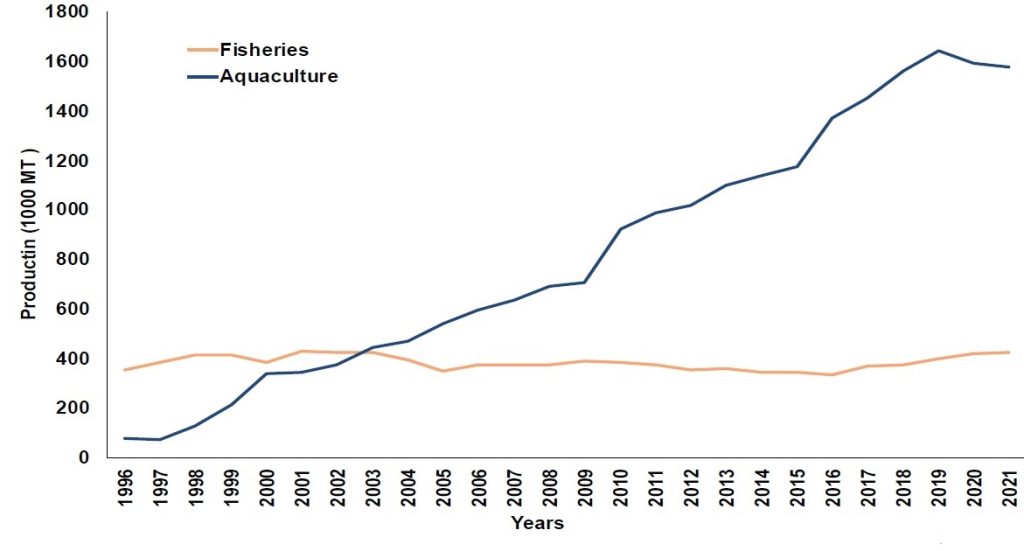
Fig 1 : Production of fisheries and aquaculture in Egypt (Nasr Allah , 2024)
Fish production is provided by fisheries and aquaculture, and Figure 1 shows the progression of these two sectors from 1996 to 2021. According to this figure, fisheries production is relatively stable at around 400,000 tonnes, while aquaculture produced several tens of thousands of tonnes in 1996 and 1997, and continues to increase, reaching around 1.5 million tonnes in 2021.
In 2021 (FAO, 2023), Egypt produced 418,683 tonnes of fisheries catches, representing 20.82%, and aquaculture 79.18%, with 1,591,896 tonnes (Fig. 2).
Fig 2 : Fish Production in egypt (%) en 2021 (GAFRD, 2022)
Despite the relative stability and low production of fish from natural fisheries, local fish production has recently increased significantly and this increase is due to aquaculture, which accounts for a significant proportion of local production in Egypt.
Aquaculture is widely recognised as the fastest-growing sector in the food industry, and in 2020 it accounted for 49.2% of global fish production (87.5 million tonnes), up from 25.7% in 2000. It is predicted that aquaculture will account for 62% of the world’s food supply by 2030 (FAO, 2022).
Aquaculture has been practised in Egypt for several millennia (Bardach et al., 1972), although modern management practices have only recently been adopted to maximise production (Shaalan et al., 2018). Over the last two decades, the Egyptian aquaculture industry has developed rapidly due to the paradigm shift from traditional extensive aquaculture systems to semi-intensive and modern intensive aquaculture systems (FAO, 2020).
The adoption of best farm management practices and government prioritisation of aquaculture industry development have contributed enormously to the rapid expansion of the sector (USDA, 2016). In addition, aquaculture contributes significantly to the country’s employment and food security, as well as being important for the nutritional well-being, life of the population (Ali et al., 2020), the expansion of aquaculture has reduced and stabilised the cost of fish in Egypt, making it more accessible to the rural poor and allowing them to consume healthy and affordable animal protein which presents an advantage over other African countries (FAO, 2010) in addition aquaculture plays an important role in the economy; where the total commercial value of the aquaculture industry in Egypt was 3.1 billion USD in 2021 (FAO, 2023).
As an African country, Egypt has been the continent’s leading aquaculture producer for more than two decades, producing 97.36% of aquaculture in North Africa and 66% of Africa’s share of aquaculture in 2021 according to the FAO (2023).
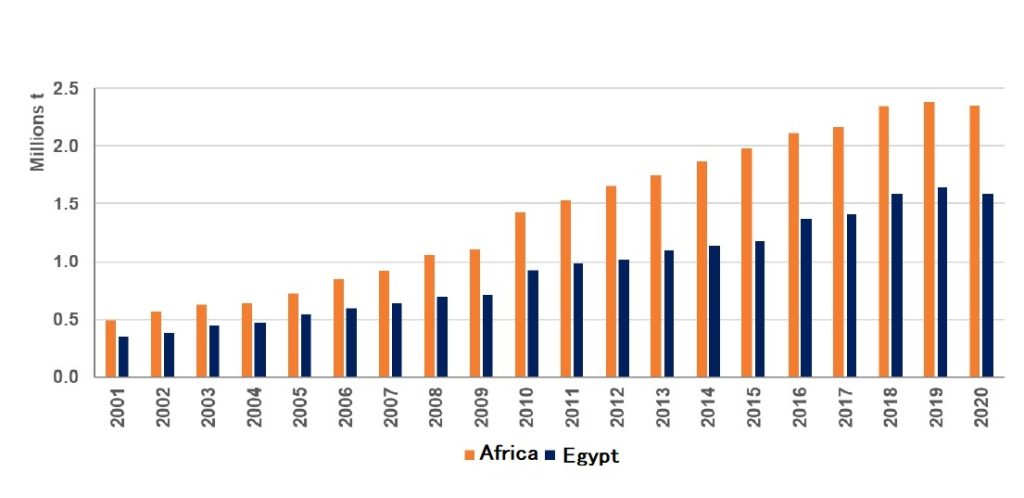
Fig 4 : Aquaculture Production in Africa and et Egypt ( FAO, 2023)
Geographically, the majority of fish farms are located in the Delta region, in the north of the country and near the banks of the Nile, as shown on the map (Figure 3) (FAO, 2010). The main governorates for aquaculture production are Kafr El-Sheikh, Port Said, Fayoum, Behira and Sharkia (GAFRD, 2014).
Figure 4: Distribution of major aquaculture and fisheries production sites (FAO, 2010)
In Egypt, many fish farming systems include:
- (A) extensive aquaculture, which includes land-based pond culture, as well as restocking lakes with fry and fingerlings.
- (B) A semi-intensive farming system which accounts for 80% of Egypt’s total production.
- (C) Intensive culture systems in concrete ponds, tank culture, greenhouse culture and cage culture, all of which have gained in popularity in recent years (FAO, 2020).
The rapid increase in aquaculture production is attributed to the shift from extensive and semi-intensive aquaculture to intensive aquaculture systems (FAO, 2010; Shaalan et al., 2018). In addition, this development has been supported by the introduction of new technologies for aquaculture feed production (e.g. extruded feeds), the application of best farm management practices (USDA, 2016) and the priority given by the government to the aquaculture development sector (Dickson et al., 2016), and the Egyptian government’s initiative to develop and promote the aquaculture sector as in the case of the Al-Fayrouz mega project inaugurated in 2021.
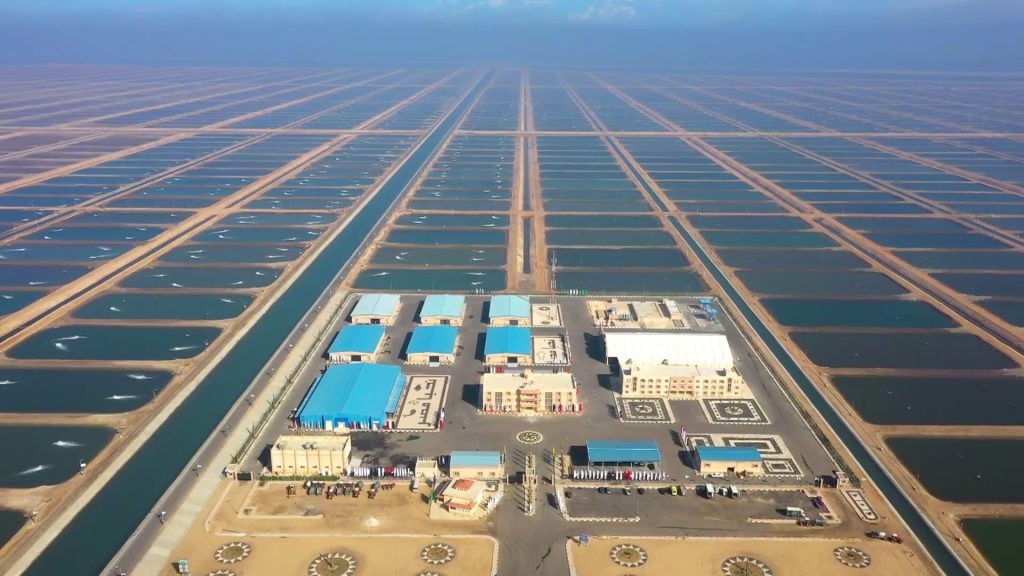
Photo Mega project Al Fayrouz Egypt (Source: The National Society of Fisheries and Aquaculture Egypt)
Aquaculture in Egypt is a promising field with great capacity for expansion and development, given that this country is ranked among the world’s top 10 producers, thanks to its political faith and its historical link with aquaculture going back thousands of years. In addition, the promotion of scientific research plays an important role in the development of aquaculture, since Egypt has institutes and centres for research and training for the sustainable development of the aquaculture industry.
Species of aquatic animals most cultivated in Egypt
Fig 5: Top 10 species grown in quantity of aquaculture production in 2021 in Egypt (FAO, 2023)
- Tilapia: With an estimated production of 963,834 tonnes/year, tilapia is the leading fish in the industry, accounting for 61.1% of production.
- Mullets: Mullet aquaculture ranks second in Egypt after tilapia, with production estimated at 351,197 tonnes/year, around 22.3% of total aquatic animal production.
- Carp: The third ranked Egyptian aquaculture product is mullet, with annual production of 145,473 tonnes/year, accounting for around 9.02% of total aquaculture production.
- Sea bream 42,743 tonnes/year
- European sea bass 33,245 tonnes/year
- Meagre 27688 tonnes/year
- Catfish 8475 tonnes / year
- Penaeus prawns 3429 tonnes / year
Farming of marine fish species and penaeid shrimp began in the late 80s and early 90s. Marine aquaculture in Egypt is still dominated by freshwater farming.
The percentage distribution of the most cultivated species in Egypt is shown in fig 6.
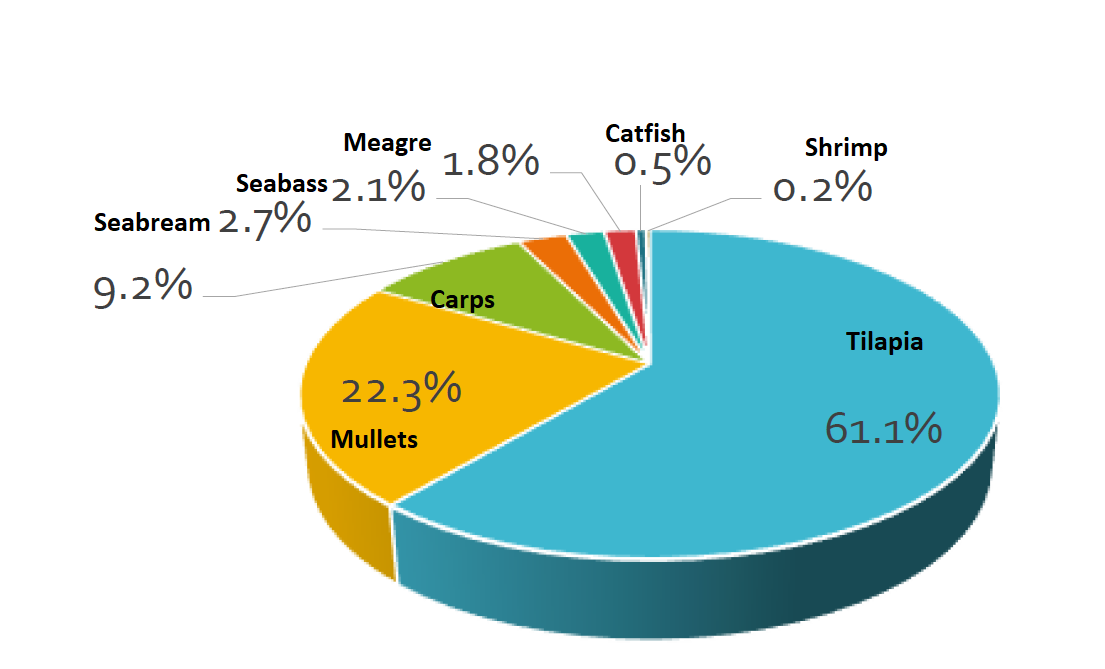
Fig 6: The percentage distribution of the most cultivated species in Egypt
Egypt is the leading producer of tilapia in Africa, with a production rate in Egypt of 61.1%, followed by Mullet with 22.3%, carp with a rate of 9.2%, bass with 2.1%, 1.8% for meagre, 0.5% for catfish and finally 0.2% for prawns.
Conclusion
Egypt is Africa’s most productive country for aquaculture. Its massive contribution to this sector is driven by the Egyptian authorities, who are paying increasing attention to the role of farmed fish in improving food security and nutrition, as well as increasing employment opportunities and family incomes. In addition, Egypt has several institutions and research centres that support the development of aquaculture, which can be adopted by other African countries to have the approach that works successfully in Egypt.
Source: Aquaculture Feed Magazine Africa. Volume 1 Issue 2. 2024.

